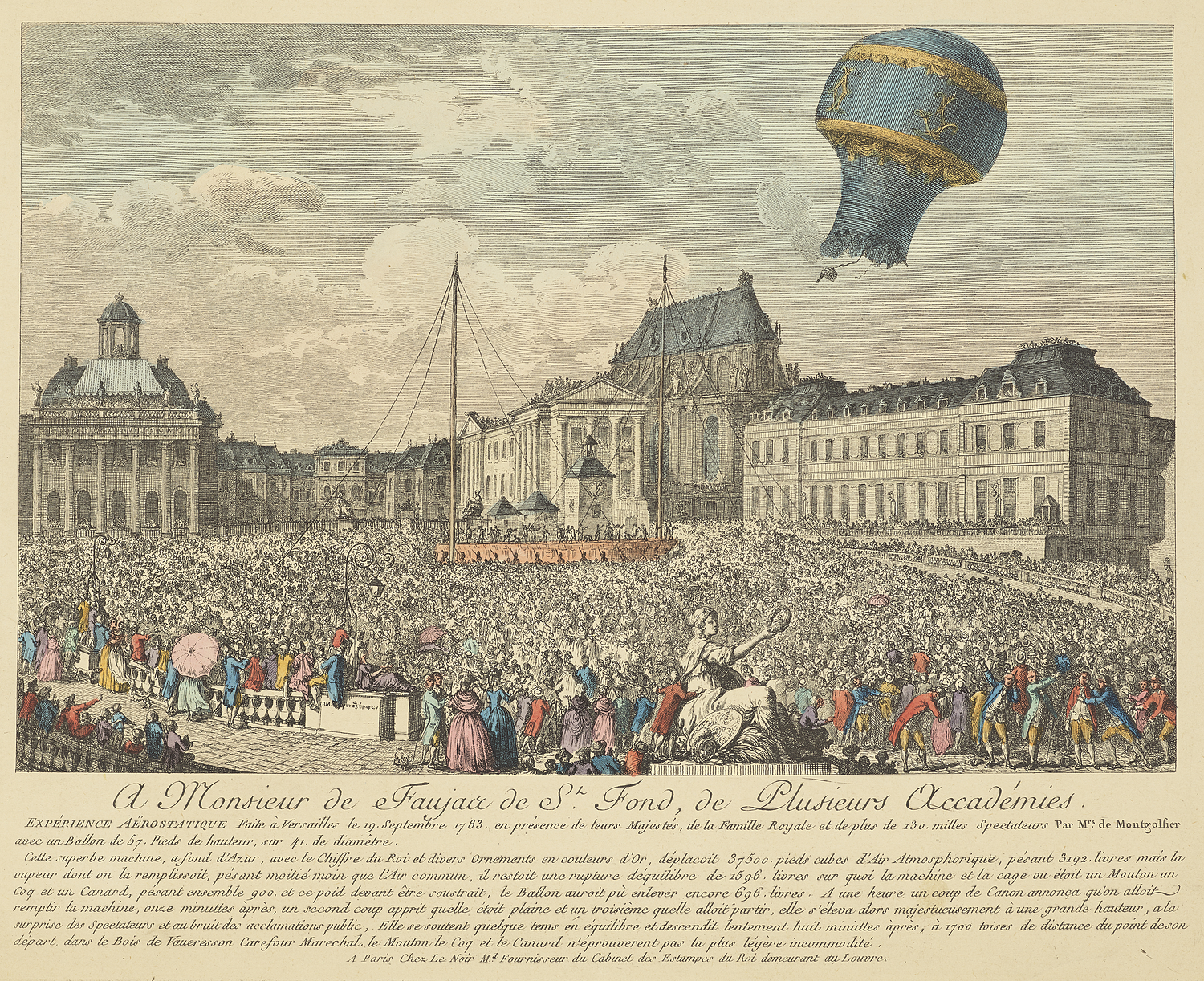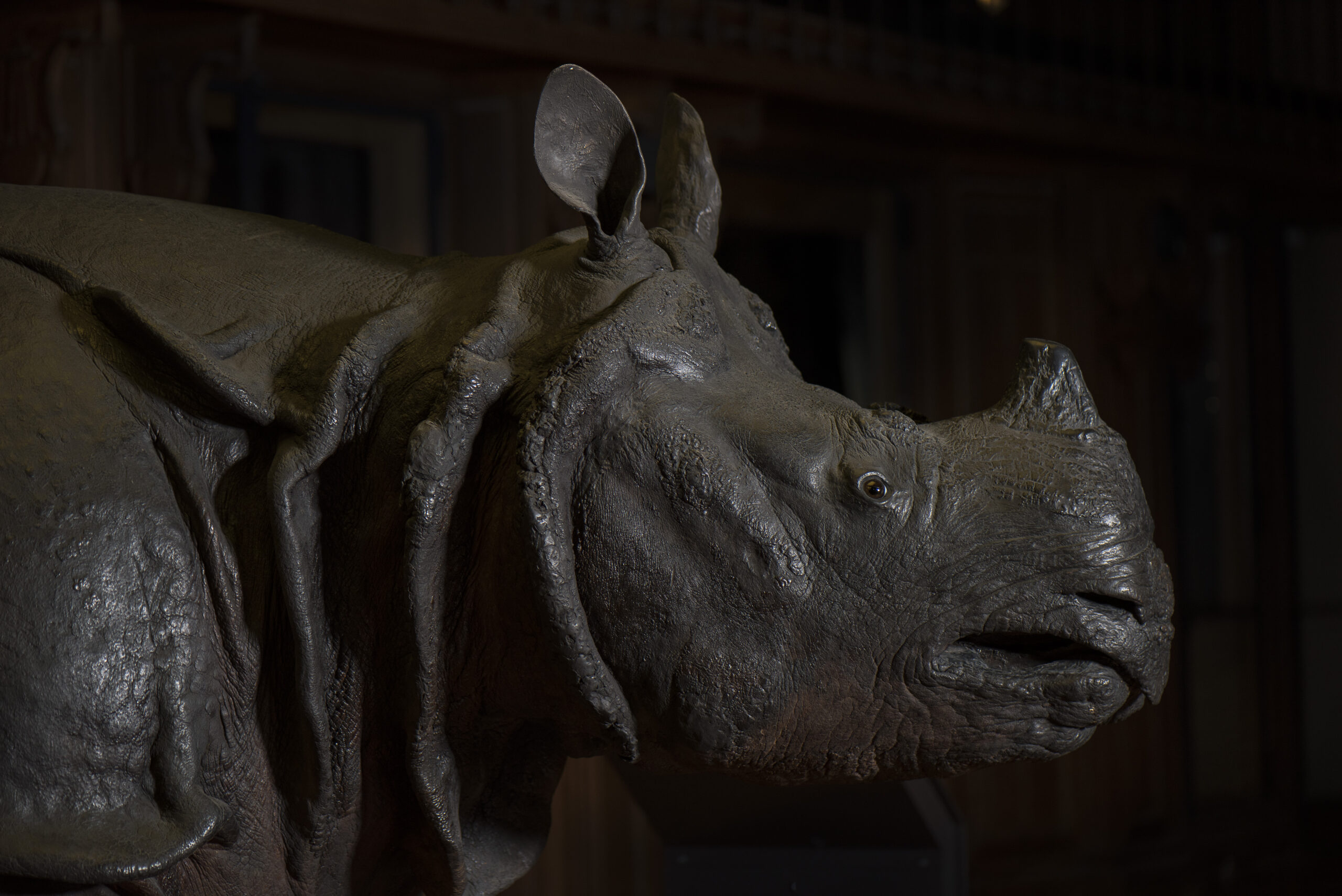Think of the word ‘Versailles’, and science probably doesn’t spring to mind. First and foremost, it conjures the image of an imposing French palace: a site of material luxury, courtly entertainment, and political intrigue.
As the heart of French royal and political power during the reigns of Louis XIV, Louis XV and Louis XVI, the Palace of Versailles was indeed all these things. But less familiarly, it was also a place of serious – and often groundbreaking – scientific enquiry and experiment. Take, for example, the world’s first hot air balloon flight with living passengers (a sheep, a duck, and a cockerel!), which in September 1783 launched into the air from Versailles’s courtyard before King Louis XVI, Queen Marie-Antoinette, and a captivated audience.

A major new exhibition at the Science Museum, Versailles: Science and Splendour, shines a spotlight on many of these lesser-known stories. It adapts and builds on a previous exhibition curated at the Palace of Versailles, to reveal how the French monarchy harnessed science to enhance royal prestige and extend France’s global influence. This exhibition also considers Versailles not just as a literal space and sphere of scientific activity, but as a symbol of French power and influence which extended beyond the physical palace limits through scientific networks, institutions, and patronage.
Versailles’s kings are joined by a cast of players from the wider royal family and court, including the children of Louis XV who were educated in experimental physics, and even that most infamous of queens, Marie-Antoinette. The significant contributions made to the history of science by other women are highlighted, from the botanical artwork of Madeleine Basseporte, painter of the King’s Garden, to the dissemination of Newtonian physics by the aristocrat Émilie du Châtelet. Nor is this exhibition only concerned with science in the immediate service of royal indulgence. Some projects were designed to benefit the general population, such as the granting of a royal warrant to the midwife Madame du Coudray to train other midwives across France using her highly sophisticated understanding of anatomy.

At the heart of our story are the three kings synonymous with Versailles: Louis XIV, who made the palace the seat of the French court in 1682, Louis XV, and Louis XVI, the last king to live there before the outbreak of the French Revolution in 1789. Each had a unique relationship with science which played out at Versailles, in wider France, and across the world.
For Louis XIV, the ‘Sun King’, science was above all a strategic tool to help assert and extend his power. Astronomy, for instance, was vital to aiding navigation, with implications for colonial expansion, improving trade, and asserting maritime authority. In 1666 he ordered the establishment of the Royal Academy of Sciences, followed a year later by the founding of the Paris Observatory, attracting some of the best and brightest scientific minds in Europe to work directly for the French state and enhance France’s scientific reputation.
The expertise of members of the Academy of Sciences also helped to transform Versailles itself from a hunting lodge into a fitting expression of Louis XIV’s magnificence: the sumptuous palace we know today. Nowhere was this truer than in the palace gardens, whose extravagant fountains and controlled landscaping were achieved thanks to mathematical ingenuity and technological innovation applied on an extraordinary scale. The grounds were likewise home to a menagerie, whose rare and foreign animals, sent from French colonies or given as diplomatic gifts, were inherently symbolic of royal power and prestige. But they also provided a resource for anatomical study and publications, dissected (after they died!) by members of the Academy.

Louis XV and Louis XVI both engaged with science on a more personal level. They amassed private rooms or ‘cabinets’ at Versailles and other palaces, brimming with scientific instruments to be enjoyed at leisure. Louis XV’s particular passions were for astronomy and botany. He established a botanical garden at Versailles where influential research was undertaken in the emerging European field of plant classification. A culture of scientific discourse and learning permeated court life at Versailles more generally during his rule, reflecting wider fashions for scientific knowledge as an intellectual status symbol. Louis XVI, meanwhile, had a keen interest in technology, engineering, geography, and the military and naval sciences. In private at Versailles, he studied mechanics and plotted maps. But in his public role as king, and often against the backdrop of war, these pursuits translated into supporting engineering schemes for national defence, and international exploration for greater French prominence in the Pacific.

Why is Versailles not better remembered for stories of science today? The site has changed over the centuries: the menagerie no longer exists, and the Marly Machine, a monumental hydraulic scheme to provide water for the fountains, has likewise vanished. Similarly, the royal collections were dispersed during the French Revolution, but many were thankfully recognised for their scientific importance and are now preserved in museums and libraries. Some of these objects have even found their way back to the palace. Although the fall of a guillotine blade brought the monarchy to an abrupt and bloody end, Versailles itself endures as a legacy of royal power. So do many of the scientific establishments founded or sustained by the kings who lived there, including the Academy of Sciences and the Paris Observatory.

Beautiful artworks, superbly crafted scientific instruments, unique historical models and documents – and even a taxidermy rhinoceros – help this exhibition to paint a picture of science as part of wider cultural and political history. Many of these objects have never been on display in the UK before and they have travelled largely from institutions in Paris and the Palace of Versailles itself. Together they join objects from collections in London, and of course from the Science Museum Group Collection. Versailles: Science and Splendour brings renewed focus to this often overlooked and surprising angle of history, in all its gilded glory.
Versailles: Science and Splendour will open at the Science Museum from Thursday 12 December 2024 to Monday 21 April 2025. You can book a ticket here.
The exhibition is generously supported by BNP Paribas (Associate Sponsor), Sir Sydney Lipworth KC and Lady Lipworth CBE, and The Michael Marks Charitable Trust.